Work can definitely be stressful, especially if you do it from home. If you have a long list of things to do and are always busy, you might want to brighten up your space with a few office plants that don’t need much care. Keep reading to find out the best plant for office.
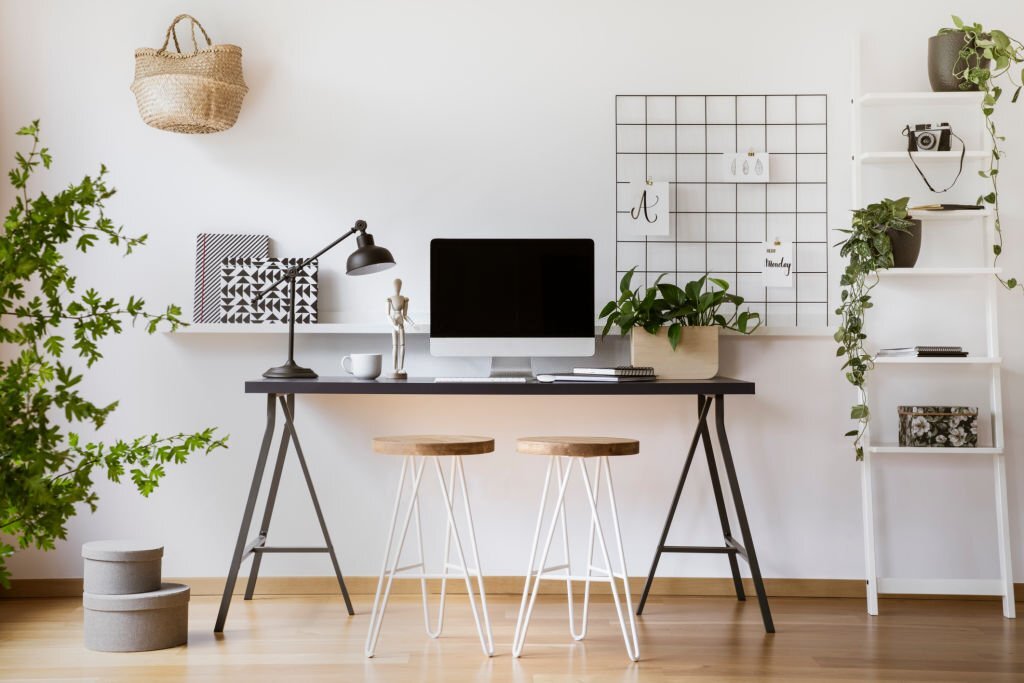
Research has shown that having indoor plants can make you less stressed and help you focus and be more creative.
In other words, it’s clear that plants are good for your health. Of course, you’ll also improve the look of your office environment at the same time!
Office plants can make the air around your desk more humid, help clean the air, and make your space more interesting to look at. You can have as many plants as you want in your office as long as you remember to water them every once in a while.
Do you want to know what those plants that best thrive in your office? Then you won’t want to miss this article because we’ll go into detail about the best office plants that you can grow in your work space.
27 Best Plants For Office
1. Philodendrons
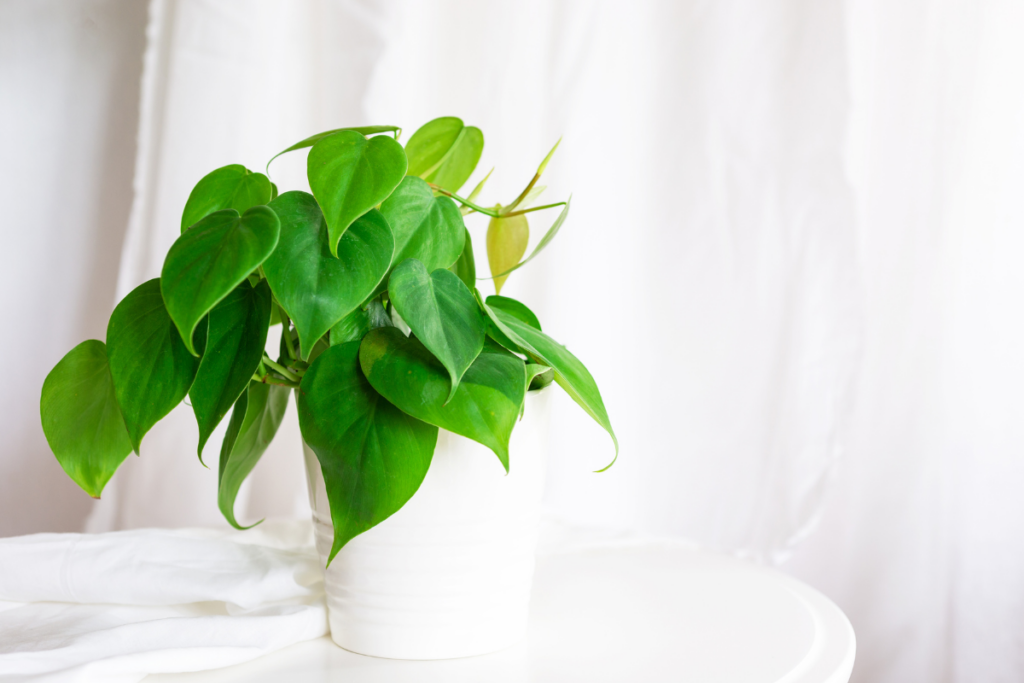
With its trailing growth pattern and glossy emerald leaves, the carefree philodendron will offer enjoyment to any workplace, whether it is drenched in sunshine or tucked away in a warm corner.
Despite being widely utilized for hanging baskets, the philodendron thrives growing on a small trellis or totem pole.
Since the philodendron requires regular hydration to maintain its rich look, a self-watering container will be a lifeline for plants without a consistent carer.
Grow the conventional green variety like “Green Heartleaf” beside the silvery-mottled “Brandi” cultivar for an eye-catching container combination
RELATED: 9 Stunning Rare Philodendrons; With Tips To Help Them Thrive
2. African Violets
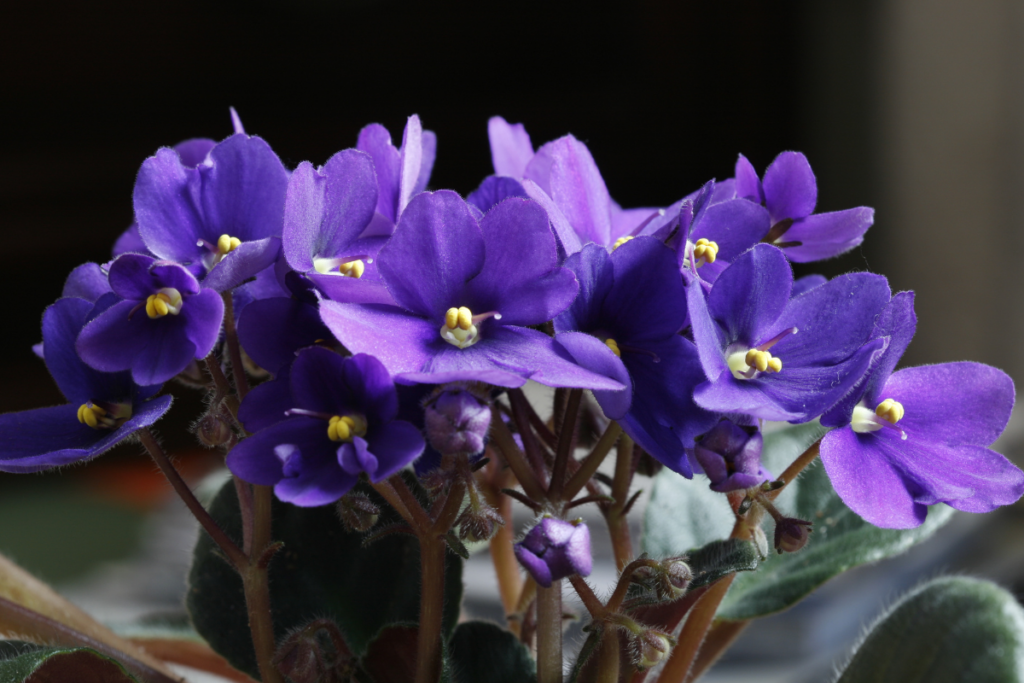
With good cause, the fuzzy plant that rose to fame in the 1970s continues to enjoy cult status. African violet hybrids today thrive in surroundings with normal humidity and temperature ranges, much like people do.
Although adequate light is needed for blooms, African violets are not picky about their light source. Therefore a fluorescent bulb pointing at the plant is fine. A window facing north or east will provide the plant with the most natural light. Keep it away from direct bright light.
Also popular are these little workplace plants. Even the tiniest places may hold a flowering plant thanks to miniature violets with a diameter of less than 6 inches.
3. Oxalis

No matter if the Oxalis, commonly known as wood sorrels, decides to blossom, the plant will still provide a burst of color to the office.
The plants are well known at the garden center around St. Patrick’s Day because of their distinctly shamrock-like look.
Ironically, certain oxalis species are considered lawn weeds, but the cultivated varieties are a little more polite. Seek out Oxalis vulcanicola’ Zinfandel,’ which has bright yellow blooms and rich burgundy foliage.
Although they thrive in low humidity, these plants need intense sunshine for the greatest color.
4. Cactus
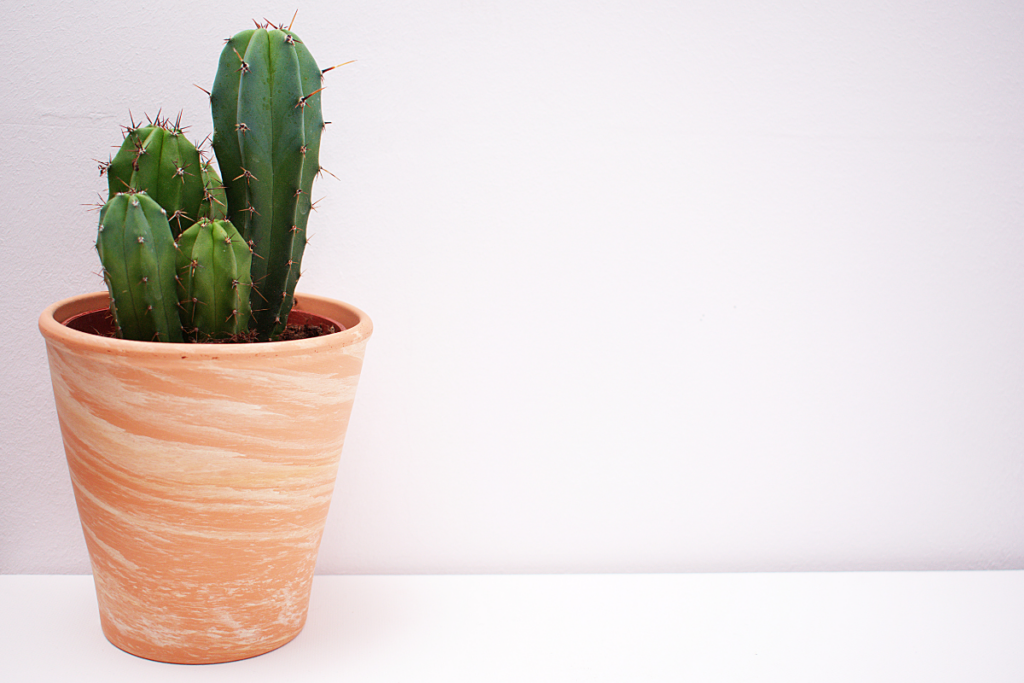
Picking only one cactus will be difficult for you. There are so many cute varieties that grow well as houseplants in offices. Desert (with hairy spines) and forest (with smooth spines) cacti are two different types of them.
Some cacti, like the Christmas cactus, a lovely and tough perennial that blooms sometimes, will also thrive in your office. Try the Easter cactus inside for a simple plant to nurture, especially for novices.
Because they don’t require trimming and grow slowly, cacti make excellent office neighbors. They also only sometimes require repotting. The only restriction is that they will need a sunny location for them to flourish.
5. Lucky Bamboo
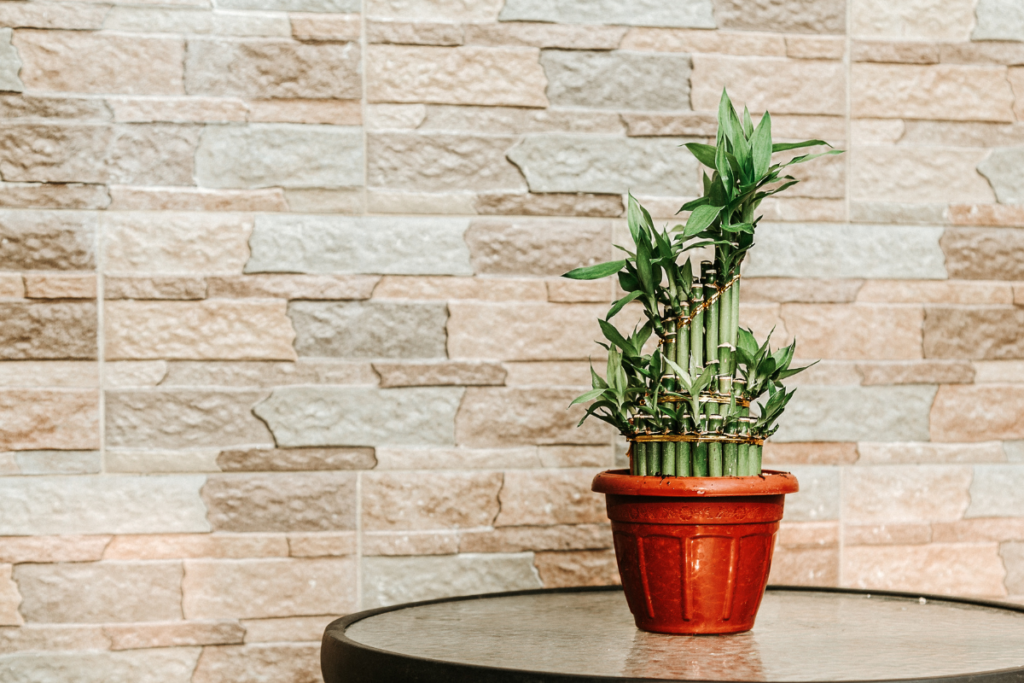
Despite going by the moniker “Lucky bamboo,” it is not among the more than 100 genera of true bamboo. The maize plant, another easy, indoor plant, and Dracaena sanderiana are really related.
Sometimes cultivators of lucky bamboo may twist the stems into intriguing patterns like spirals, hearts, or even weaves. Lucky bamboo shoots will eventually outgrow their training shapes if left to their own devices, but plants can grow slowly.
The Lucky bamboo grows without soil and works well in low-light situations when the stems are in water. The plant may be unable to fully recover from dessication if the water level drops below the stems.
6. Tillandsia

Think beyond the container if you want to cultivate Tillandsia or other soilless plants, often referred to as air plants. You may use a fishing line to attach air plants into driftwood.
Air plant variations can also be placed in a tiny terrarium or another unusual container, such as a teacup, shell, or vase.
With green, silver, or rose-spiked leaves, the genus Tillandsia contains hundreds of species of plants under the bromeliad family.
Air plants don’t require a lot of light because they are epiphytic plants that are used to living in the shade of tree branches, but those that are grown in brighter environments are highly likely to develop flower spikes.
Weekly misting is recommended for the whole plant since the modified leaf scales will take up the moisture it needs.
7. Aloe

Aloe plants are easy to grow if given one essential ingredient: a lot of powerful sunlight. In a light-filled workplace, it’s one of the best plants for a window sill.
Place the plant close to a window that receives a lot of light, and then let it alone. These succulents need to be watered occasionally.
The common Aloe barbadensis is stylish enough for any contemporary workplace. You may consider the advantages of the little ‘Minibelle’ or the spotted ‘Tiger Tooth’ cultivar, which merely appears to have pointed teeth.
To achieve the superior drainage these plants demand, cultivate them in a sandy cactus mixture.
RELATED: Aloe Vera Plant: Important Tips and Tricks in Reviving Your Precious Plant
8. Spider Plants

These well-liked, quickly-propagating houseplants and office plants generate rosettes that develop into ribbon-like, arching leaves that are over a foot long.
Only mature plants have tiny star-shaped blooms. Choose the ‘Bonnie’ spider plant, which has yellow blossoms, if you like a petite spider plant.
Spider plants don’t need a lot of maintenance. They flourish in areas with indirect light and love warm, humid workspaces, so keep them away from air conditioning vents that produce dry air. For thriving plants, keep the soil slightly damp but never saturated.
It will need to be repotted if your spider plant starts to seem a little sparse over time so that its roots have more area to expand. For a few new plants to fill your office, cut off the tiny plantlets and propagate them in fresh clay or plastic pots with well-draining soil.
9. Pothos
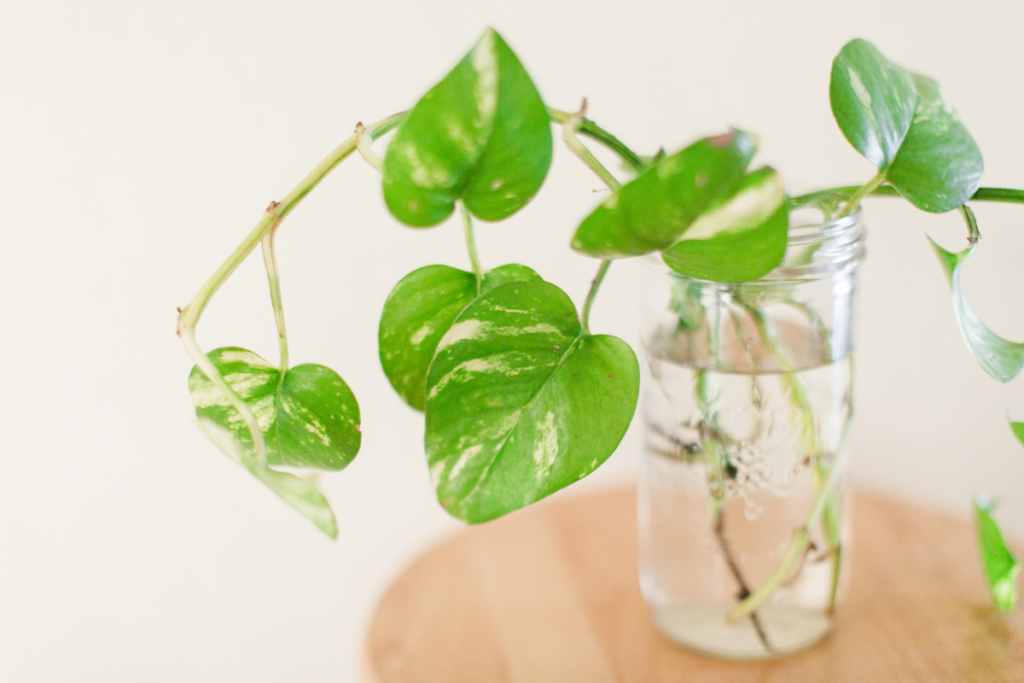
Who can ignore the pothos plant’s simple green leaves, which have a heart-shaped shape? It makes a great, quickly-growing indoor plant if kept moist in well-draining soil.
It’s conceivable to grow a foot or more per month. However, exercise caution if you routinely allow pets at work since pothos is harmful to your animal friends.
Many people decide to grow pothos that may trail down cubicle or office walls thanks to their lengthy tendrils. But if you want to trim the vines because they might tangle, make sure to own a pair of office scissors close by that you’ve cleaned with rubbing alcohol.
Pothos prefers bright, direct light, although it doesn’t mind sitting in a spot with fluorescent or low light. Look for pothos in the “Neon” or “Silver Satin” kinds since these plants do well in gloomy or low-light office situations.
10. English Ivy
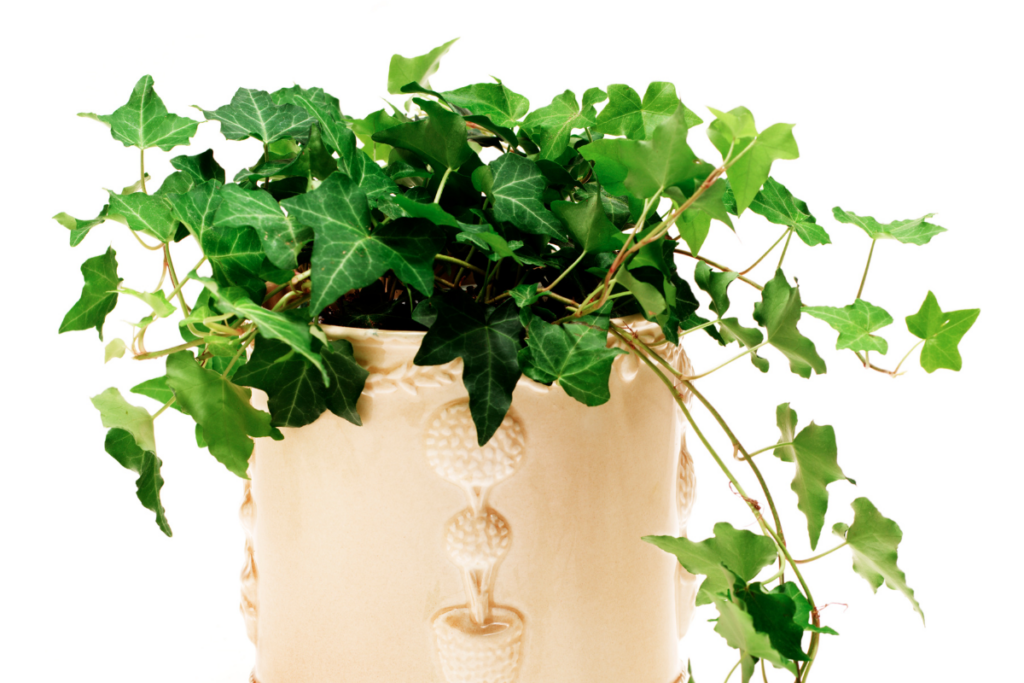
Use a plant with a trailing habit, such as English ivy, to help soften your office desk’s sharp edges. For ivy to grow inside, the proper amount of water and medium light is necessary.
Ivy tendrils can be wrapped on a trellis or a wire obelisk in order to create a magnificent artwork if it’s trailing, climbing nature becomes overbearing.
While any variation of the traditional Hedera helix is a safe bet, more diverse new cultivars have been developed.
The patterns “Silver Dollar” and “Yellow Ripple” have grey or gold variegation. Dwarf cultivars like “Pixie Dixie” work well in small places. Try the curly leaves of “Curly Locks” or “Manda’s Crested” if you’re in the mood for elegant foliage.
11. Snake Plant
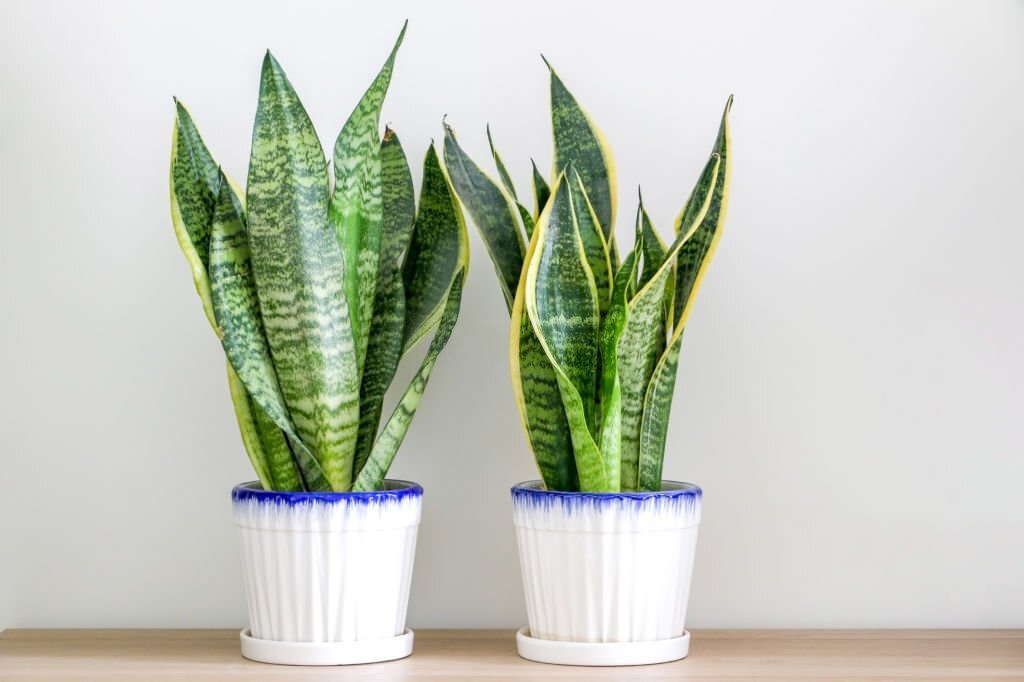
The persistent Sansevieria plant, sometimes known as the snake plant or mother-in-law’s tongue may continue to grow until its owner takes retirement. Despite the size variations among various snake plants, they are all appropriate for offices.
Read the plant label carefully in order to avoid choosing a variety that may reach heights of up to several feet. Instead, choose a dwarf variety like “Whitney” or “Futura Superba.”
A snake plant is the perfect houseplant for novices since all it needs is a drink of water from your water bottle on your way out the door on Friday.
12. ZZ Plant
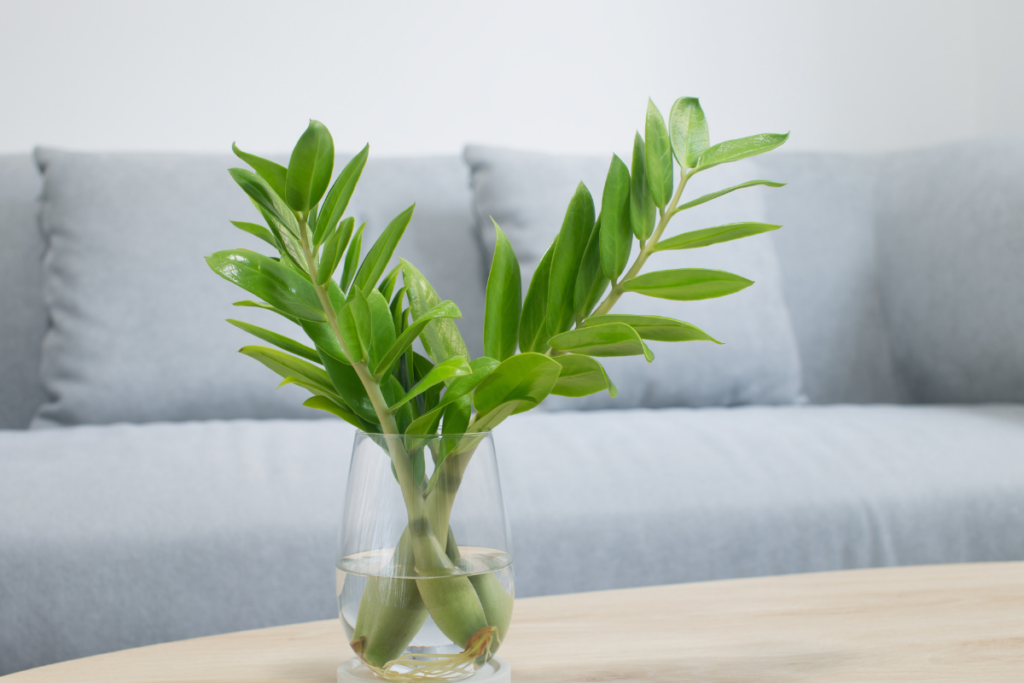
The ZZ plant, also known as Zamioculcas zamifolia, is a succulent that has become quite popular as a houseplant due to its tolerance for low light and its propensity to thrive with minimal water.
The ZZ plant, which is indigenous to Africa, can survive with only fluorescent lighting. The typical ZZ plant’s laddered leaves offer a pleasant touch to the working environment, and the newest ‘Raven’ cultivar’s virtually black stems, and foliage stands out well against a white background.
13. Ponytail Palm

The adorable ponytail palm’s spunky, strappy green foliage may make coworkers smile. Despite the name, it’s a succulent and not a palm.
The tree remains tiny enough to be exhibited on a desktop when cultivated in a small container. It might develop into a floor plant that is 6 feet tall if given a larger pot.
It is a long-lived, slow-growing plant that can withstand neglect. Put a ponytail palm in an area of the workplace with both direct and strong light to keep it content.
It should be planted in a small container with cactus/succulent potting soil that has additional peat moss mixed in to improve the soil. Water should be added every ten to twenty days; the bulbous stem stores the water.
14. Parlor Palm
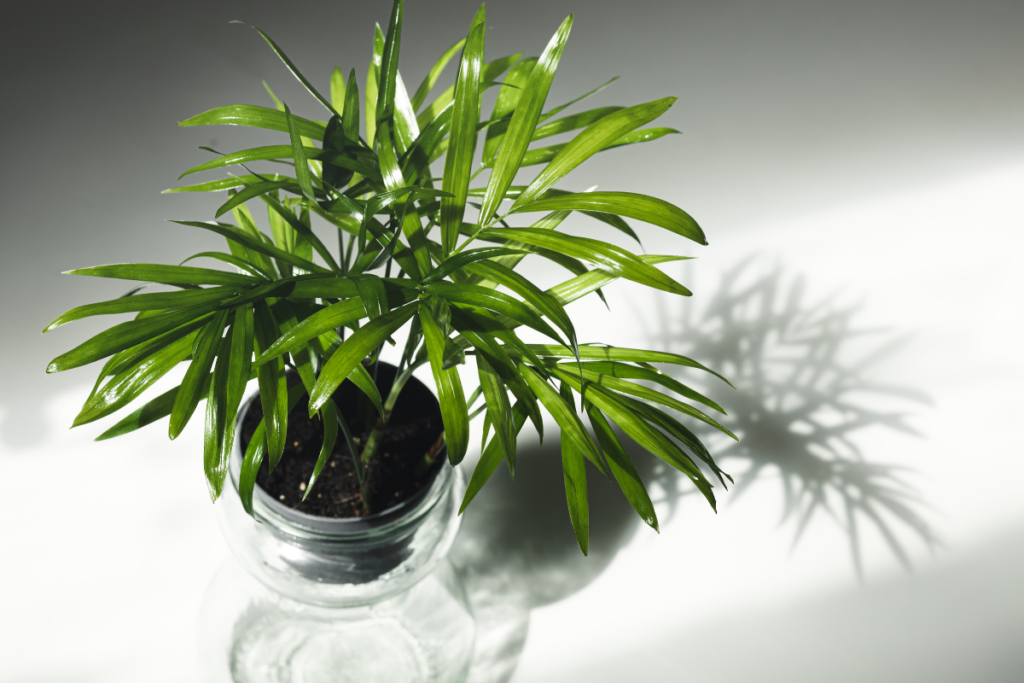
The gorgeous, frothy leaf of the parlor palm will flutter in a bit of wind. It prefers a moderate amount of indirect light—neither too much nor too little.
Due to its ability to adapt to low light conditions and its inability to resist excessive watering, the parlor palm is an exceptionally gorgeous office plant that can easily enhance a workspace with little to no effort on your part.
Only one watering should be necessary each week. There is no need to worry about killing the plant by not watering it since the fronds of the plant will turn yellow to signify that it needs to be watered.
Because it seldom requires repotting, can withstand air conditioning, and slowly grows over the years, the parlor palm is recognized as the finest office plant.
15. Prayer Plant

The green foliage of prayer plants has unusual patterns that make them very appealing. It’s a pretty exciting plant all the same; during the day, the leaves remain flat, but at night, the foliage folds up to mimic prayer hands.
Prayer plants aren’t the most straightforward to cultivate and care for since they are sensitive to air conditioners and aren’t drought resistant.
Other minimal maintenance plants may not be able to live in office environments with shaded sections, but these can. In regards to the soil, they don’t have many preferences either.
Periodic waterings are advised to keep the soil just barely wet to the touch. Prayer plants love warm or room temperature water, so avoid putting cold on them.
RELATED: Prayer Plant’s Bloom 101 | How To Make Your Prayer Plant Bloom Fast!
16. Dwarf Umbrella Plant
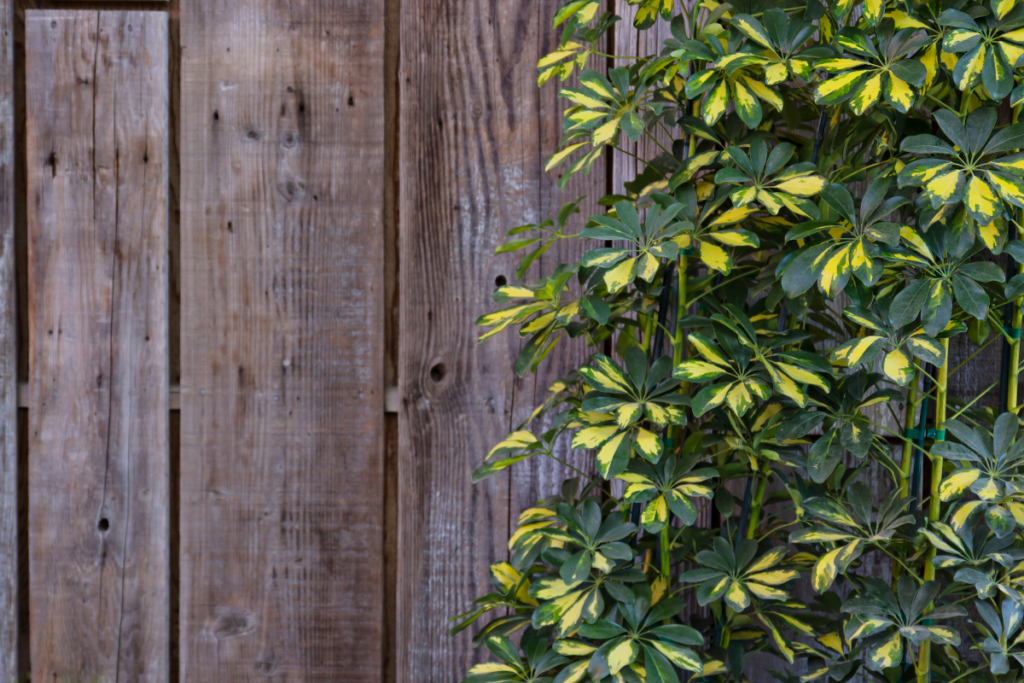
Choose a low-maintenance dwarf umbrella tree if your workplace is well-lit. It’s a tropical houseplant with drooping, beautiful leaves that develop to resemble flower petals or, to some, an umbrella shape. Given that it only reaches a height of 4 feet, smaller workplaces are the ideal setting for it.
Solid green, variegated, or almost white leaves can be produced by dwarf umbrella trees. “Dazzle” has virtually white foliage, and “Gold Capella” has variegated leaves in shades of gold and green.
You might need to shift the plant occasionally to keep it more evenly balanced as it develops because the tree tends to lean toward any source of light it detects.
Although it enjoys more light, this plant can tolerate any kind of workplace lighting (except direct sunlight).
17. Weeping Fig

Because it has a very long lifespan of up to 50 years, weeping fig tree, also known as ficus tree, is frequently utilized in retail, office, and commercial interior landscaping.
Ficus benjamina “Variegata” and ‘Starlight” are two variegated cultivars; normally, the leaves are tiny, glossy green ovals.
The perfect approach to decorating a bare space in a workspace or office is with a weeping fig tree. However, be careful while choosing the area because ficus trees do not like to be relocated.
Choose a location where you will not forget your lovely tree because it also loves a lot of water and sunlight.
18. Spiderwort

A spiderwort plant, which is a little plant with lovely purple leaves, will look elegant on a shelf or desk. With the least amount of maintenance or work, it yields luscious leaves.
Although spiderwort prefers humidity, if your workplace is dry, choose to spritz your plant once per week as an important part of your gardening routine. Increase the spraying frequency to once or twice a week if its leaves start to turn brown.
Regular potting soil and practically any amount of light are suitable for the plant. However, a plant’s demand for greater light increases with its degree of variation. Just remember to keep it out of the sun’s direct rays to prevent leaf burn.
Choose “Purple Heart” for leaves that are entirely purple, or “Grow” for extra reddish-orange leaves with silver stripes.
19. Rex Begonia

For an office desk, choose one of the Rex begonia’s numerous jewel-like varieties. With hundreds of varieties that have speckling, veining, and even swirling patterns in hues of silver, purple, red, and green, it’s all about the leaf with these plants.
Ruffles, puckers, and multicolored hairs distinguish kinds, including “Stained Glass,” “Marmaduke,” and “Escargot,” which have a range of leaf textures that provide interest. Low light is good for Rex begonias but requires enough humidity to grow.
20. Peace Lily
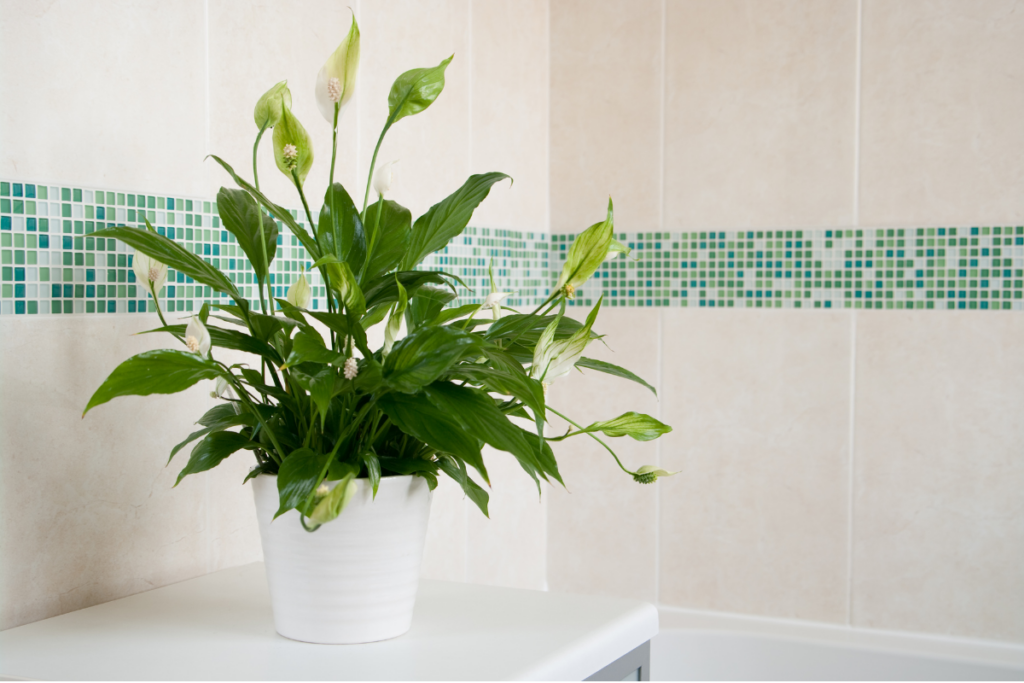
A peace lily plant’s broad, glossy green leaves are calming to look at; the plant also represents healing and optimism.
Additionally, the crown will produce hooded white oval blooms twice a year. However, peace lilies do need some maintenance, so it’s not a plant you can ignore.
Find a location for your peace lily close to a window that receives filtered light. This plant likes well-draining, loose potting soil that is kept more submerged than damp (which is helpful when you go on vacation).
The peace lily, however, is signaling to you that it needs to drink so that it may perk back up as soon as you notice it droop.
If you bring your pet to work, you should also be cautious around the peace lily plant because it is poisonous to animals.
21. Nerve Plant

Use Nerve Plants to provide brightness to a dark workspace. Its oblong green leaves have prominent veins that are frequently white, pink, or silver.
But since it prefers high levels of humidity, nerve plants should not be overlooked, so keep in mind to water, as well as spray it. You’ll be able to tell whether it’s in trouble if it practically topples over when it is dry. It may be revived with substantially good watering.
Regardless of the hue of its veins, this plant can endure both diffused light and fluorescent office lighting. Look for the Red Star or Fortissimo types if you want leaves with pink veins.
22. Cast Iron Plant
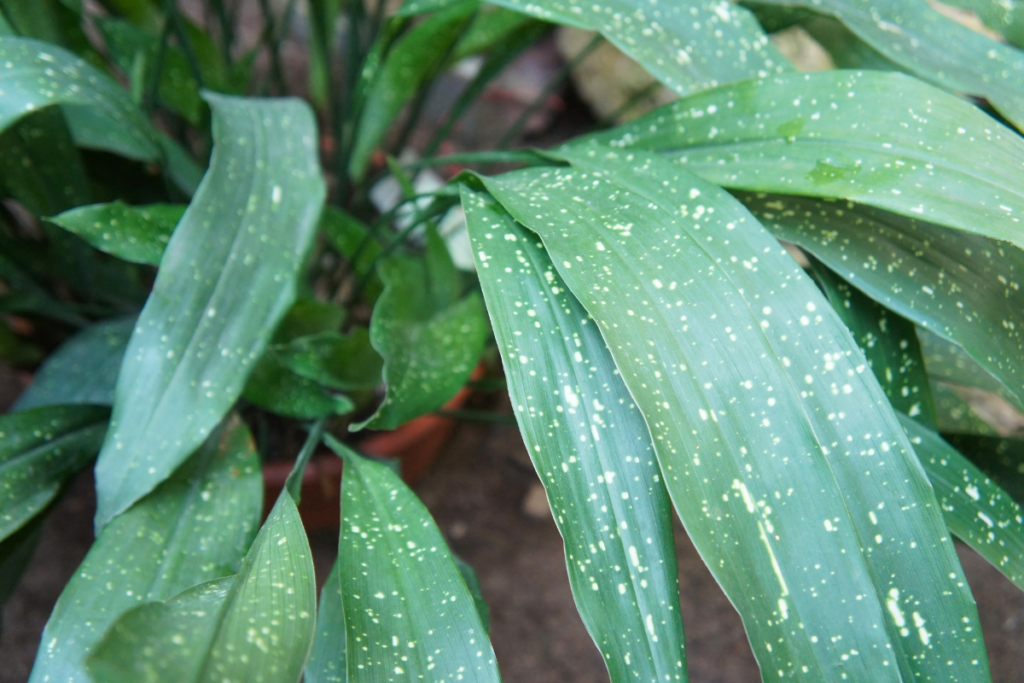
This plant is known as the “cast-iron plant” for a variety of reasons, including its widespread use in workplaces.
It doesn’t require much care and is difficult to kill, but because of its glossy, deep green leaves, it performs a superb job of enlivening a drab office area.
The hardy, long-lasting cast iron plant doesn’t need much watering and may thrive in dim lighting. It just truly requests that you keep it out of direct sunlight so that you don’t scorch its leaves.
Choose ‘Hoshi-zora’ for green leaves with yellow and white speckles or ‘Variegata’ for green leaves with white stripes for more eye-catching foliage.
23. Jade Plant
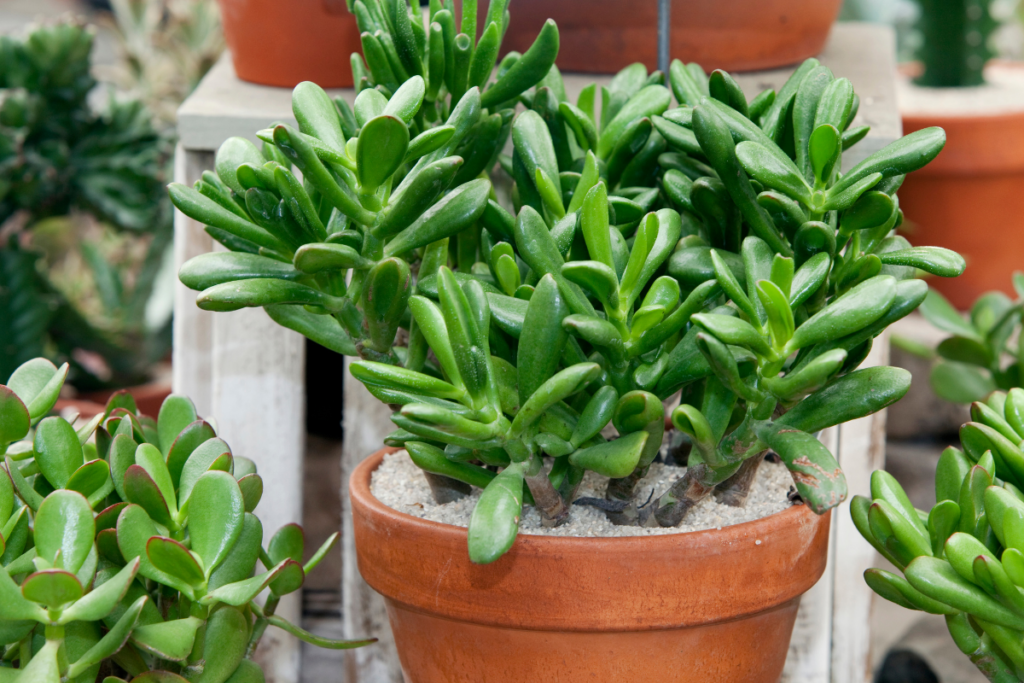
A jade plant, commonly referred to as the money plant, can bring luck and wealth to your workplace. These succulents have cheery upright leaves that are thick, meaty, and shaped like teardrops.
To ensure that your succulents grow well in an office setting, make sure they get enough light. For this plant or other succulents, low illumination is not recommended. Succulents should be placed on sunny sills as opposed to in direct sunlight since the leaves will burn.
Try different succulents like a string of buttons and hen and chick succulents if you enjoy growing jade at your office. Thanks to succulents, your office will have a ton of texture and visual intrigue. Succulents are harmful to animals, so make sure they are out of reach for any visiting pets.
24. Peperomia

Peperomia has floppy but durable foliage that has a wide range of textures, hues, and variegations, making it difficult to define a common appearance for the genus.
The fact that they are all drought-tolerant, low-maintenance, slow-growing plants makes them all the perfect workplace companions.
This plant is forgiving of minor carelessness. Water the soil when it is dry, fertilize it infrequently, and place it in direct or somewhat indirect light. Peperomia are adaptable plants that do well in peat moss-infused normal potting soil or orchid-specific potting medium.
There are plenty of peperomia plants available to decorate your office. Consider P. caperata ‘Suzanne’ for its highly ridged foliage with a lot of silver highlights or P. verticillata’ Belly Button’ for its small leaves.
25. Chinese Evergreen
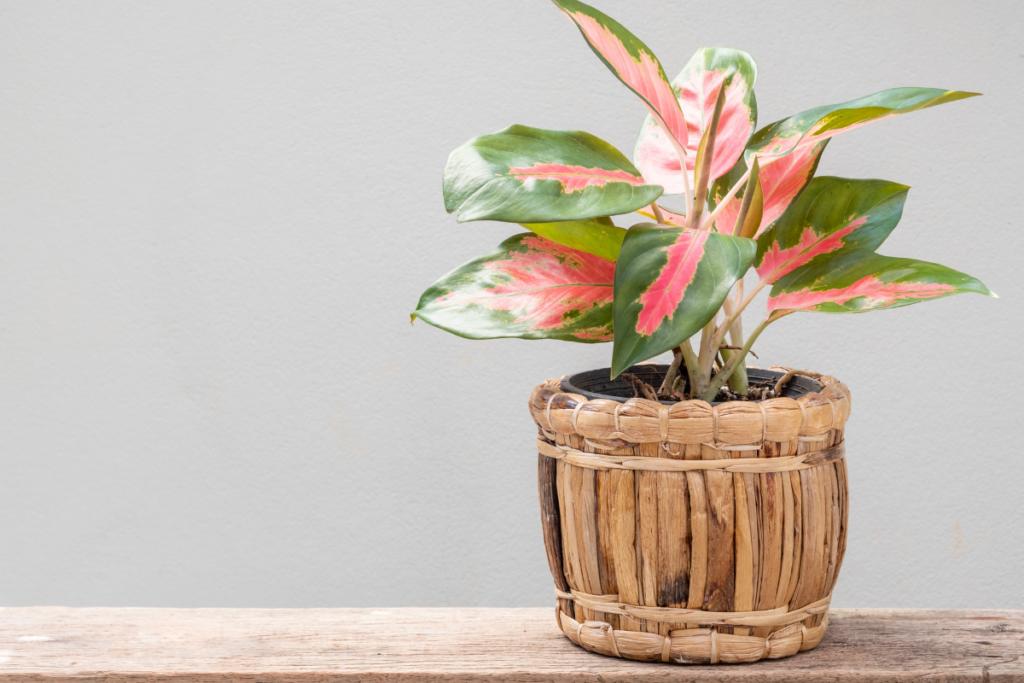
The dim workplace environments are a welcome sight for Chinese evergreens. Their huge, glossy leaves will not rapidly get shaggy since they grow slowly.
Chinese evergreens are favorite office plants since they are simple to cultivate, want to be left alone most of the time, and have a variety of leaf colors.
The more colorful and varied the leaves are, also the more light and warmth they will require to survive even if the plant works well in low light. If the air in your office is very dry, mist your plant.
Chinese evergreens with colorful variants consist of “Red Zircon,” which has green leaves with pink spots, and “Maria” and “Silver Bay”, which both have green foliage with silvery stripes and tinges.
26. Maidenhair Fern

The maidenhair fern, also called the adiantum, has a different appearance from the other plants we’ve discussed thus far. It has growing, hair-like leaves that are small and joined to a vine.
Despite how attractive it looks, cultivating maidenhair fern requires a lot of safety measures. For instance, only use distilled water instead of hard water. This entails purifying the water you provide the plant rather than merely using the tap water.
Additionally, you must maintain soil moisture to prevent root rot. Additionally, if at all feasible, attempt to give humidity for the maidenhair fern. Finally, keep the plant in a space with lots of indirect light and avoid direct sunlight.
27. Peacock Plant
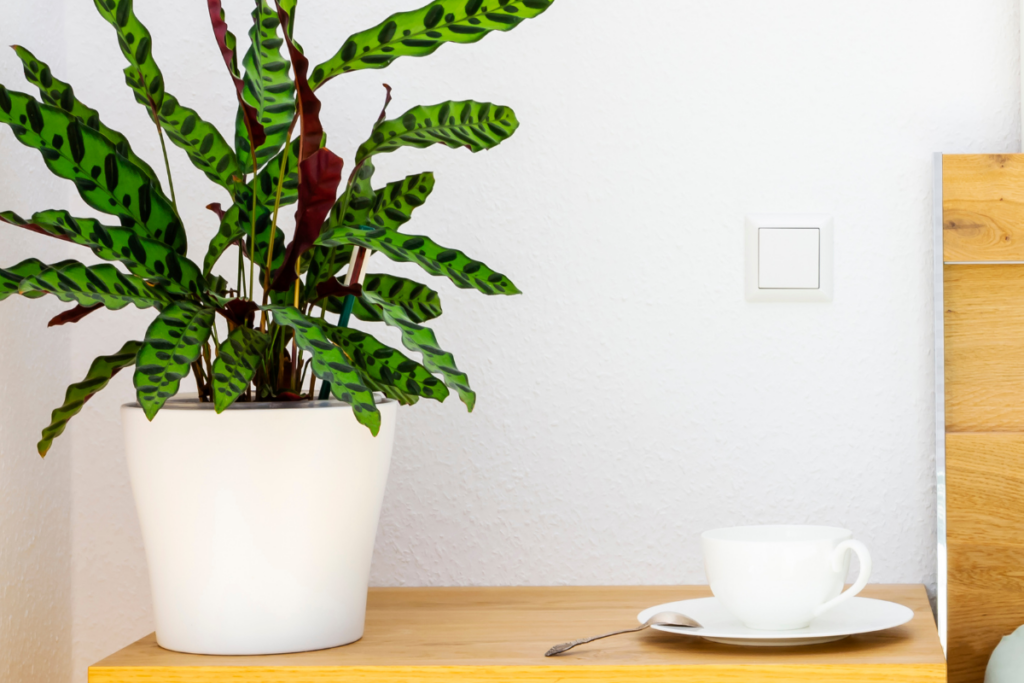
The eye-catching Calathea makoyana, sometimes known as the peacock plant, got its name from its brilliant leaves.
They cover a range of hues, including a light shade of green, one that is more vivid, and one that is also darker. Due to their distinctive design, you may nearly mistake these leaves for the exquisite, magnificent peacock feathers.
The appearance of those leaves can be altered by too much direct light, making them pale and drab. Low or medium light is adequate.
Frequently Asked Questions
What plants are lucky for a desk at work?
Some plants are believed to bring luck and wealth in feng shui. The money plant, lucky bamboo, and jade plant are a few of them.
Why is a suitable office plant important?
A good office plant is one that can handle low light, doesn’t require a lot of water or fertilizer, and doesn’t need much (if any) trimming. The plant must be able to resist your office’s temperature and humidity level.
Are cacti suitable for offices?
Succulents are a great accent to an office desk if it has a bright window or grow light. Although many species are still tiny, they nonetheless offer a lot of visual pleasure. More so, they are low maintenance office plants so they usually need relatively little upkeep.
Editor’s Recommendations
8 Useful Varieties of Pink Cactus for Indoors and Outdoors
8 Best Indoor Bonsai Trees To Turn A Corner Of Your Home Into A Magical Place







